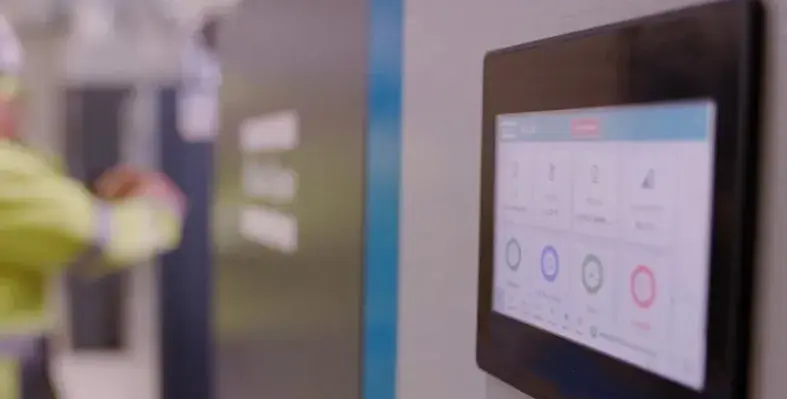Isola, located in Notodden in southern Norway, provides environmentally friendly products for the construction industry.
The company produces insulation materials, roofing membranes, wind protection, and sealing products. Given that the construction sector accounts for about 40% of global CO2 emissions, reducing harmful emissions with such building materials is crucial. Efficient production processes also play a significant role in combating climate change.
Until recently, two roots vacuum pumps were the core of these rough vacuum applications. "However, the disadvantage of these roots pumps was their high energy consumption: up to 90% of the energy used was lost via the waste heat from the motor," said Ulf Strand, factory manager at Isola in Notodden.
This prompted Isola to overhaul its production process and transition the vacuum supply to two oil-sealed, speed-controlled screw vacuum pumps: the GHS 2002 VSD+ with HEX@TM control from Atlas Copco. One of the key benefits of this system for the aforementioned applications is its energy recovery capability.
Intelligent resource management with advanced controller
"Since the changeover, the manufacturer has been able to recover three quarters of the heat loss via hot water by means of recuperation and utilise it productively in the process," summarises Roy Mikalsen, the responsible account manager at Atlas Copco.
The pump's HEX@TM controller offers additional savings potential: this control system allows precise adjustment of the speed to match the required vacuum level. This is particularly beneficial in applications where the vacuum demand varies significantly depending on the process and time of day. As a result, unnecessary vacuum performance is eliminated, and energy wastage is minimised, greatly enhancing efficiency and effectiveness.
Smart functionalities via user interface
Other features are also advantageous for Isola: with the Industry 4.0 capabilities of the GHS VSD+ series, the vacuum system status can be monitored at any time via smartphones or PCs. Additionally, users can start and stop the system or adjust the setpoint as needed through the configurable user interface.
"This allows the vacuum pumps to be configured even more specifically and sustainably for the respective applications," summarised Roy Mikalsen. Other optional functions include intelligent scheduling, pump-down optimisation and leak detection.







